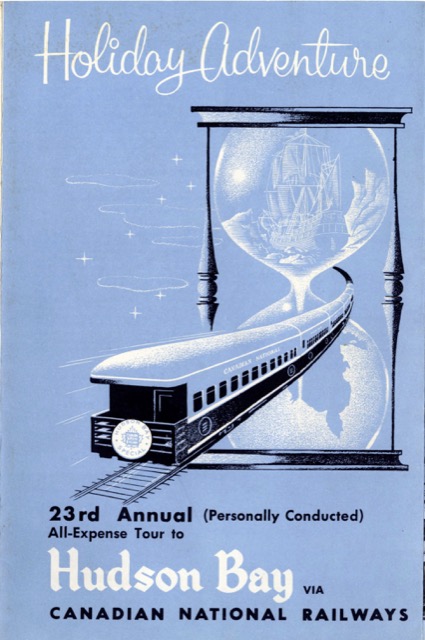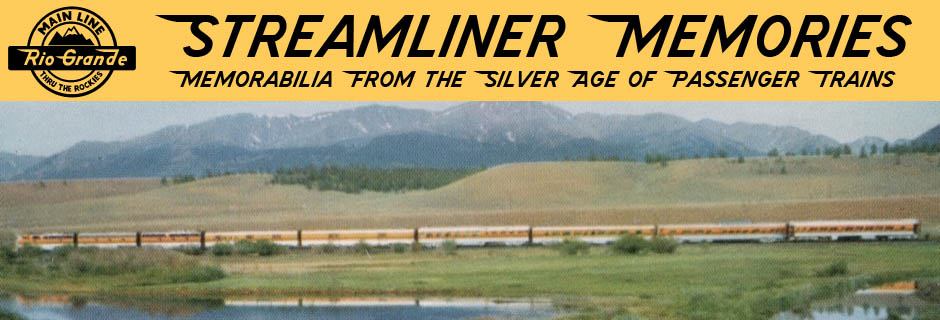This eight-panel booklet advertises 1959 six-day, seven-night tours to Hudson Bay, with stops at Dauphin, Flin Flon, Cranberry Portage, The Pas, and most importantly Churchill, Manitoba. Today, Churchill is known for its polar bears, but in 1959 they probably didn’t want to mention those for fear of frightening the tourists. This brochure did, however, feature white (beluga) whales that had been harpooned and were awaiting “processing in a local plant.”
 Click image to download a 2.9-MB PDF of this brochure.
Click image to download a 2.9-MB PDF of this brochure.
Due to train schedules, some of the tour was inconveniently timed, at least for anyone who likes to get a few hours of sleep every night. On the first night in Flin Flon, passengers were encouraged to stay up late dancing. But their train departed Flin Flon at 3 am; they wouldn’t have much time to sleep on the train, either, as it arrived in Cranberry Portage at 5 am.
“The train is your home for the entire trip,” says the brochure. For $150 (about US $1,000 in today’s money), the tour starting in Winnipeg included a lower berth, all meals, and “movies and fun in the recreation car.” The recreation car would have to be pretty entertaining, because the scenery on this particular route is about the most boring in Canada.
No self-respecting American railroad would put an open-platform observation car on the cover of a travel brochure in 1959, as such cars were only safe at slow speeds and the railroads wanted to appear competitive with driving if not with flying. No worries about this train, however: although the route was flat and fairly straight, the train went an an average speed of less than 30 mph, thus allowing an archaic tail car even though there wasn’t much scenery to watch other than evergreen trees that steadily diminished in both size and number as the route moved north.
